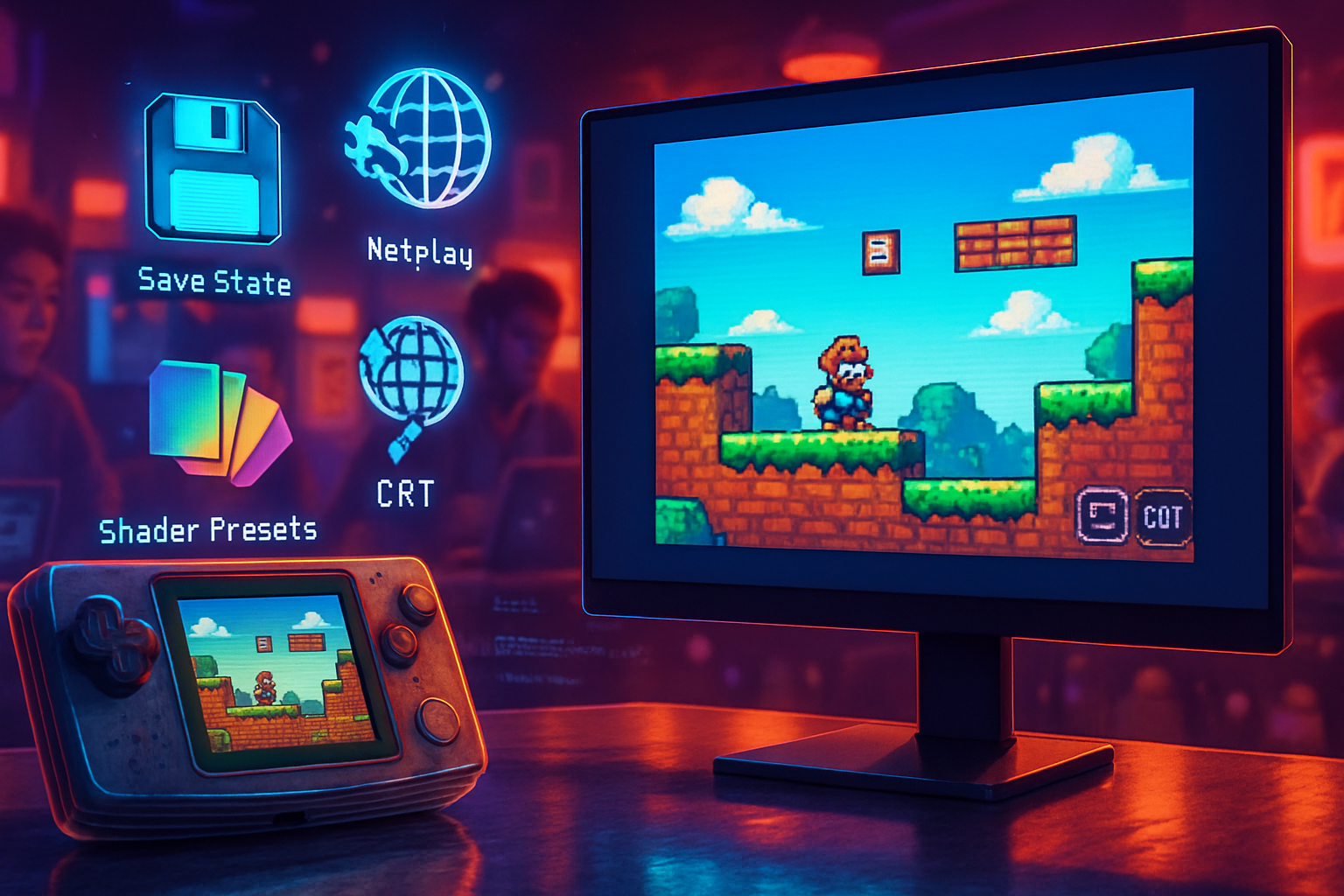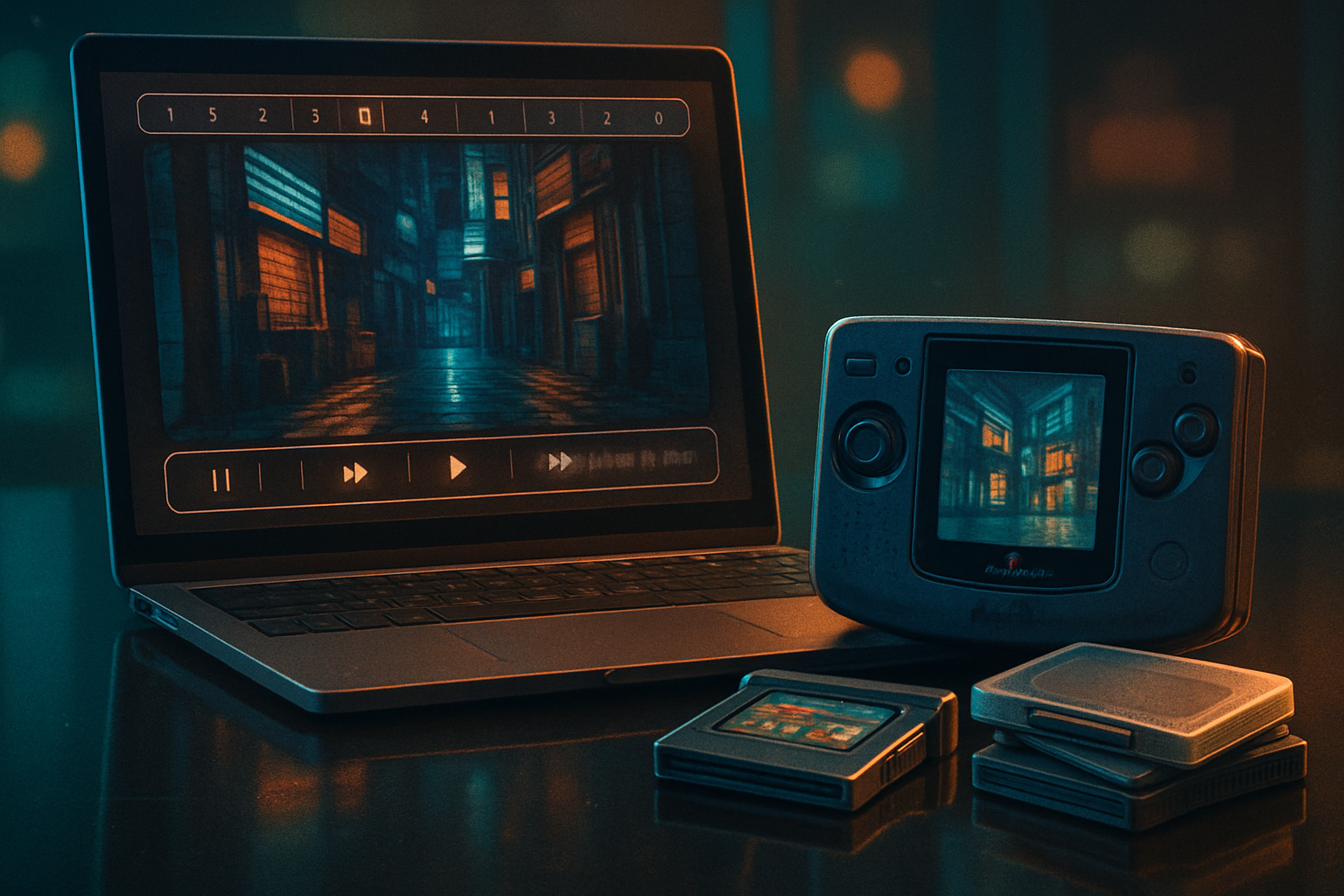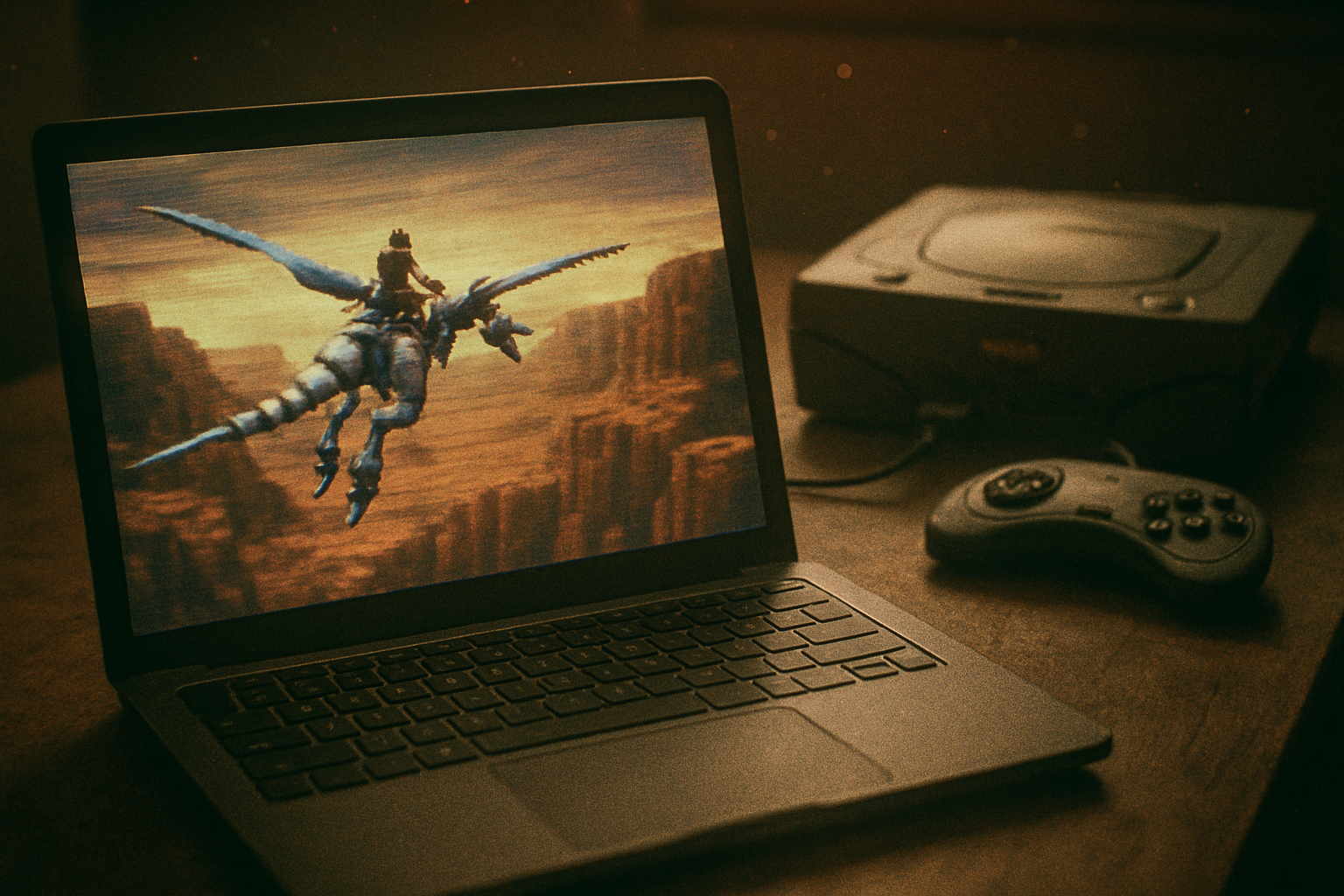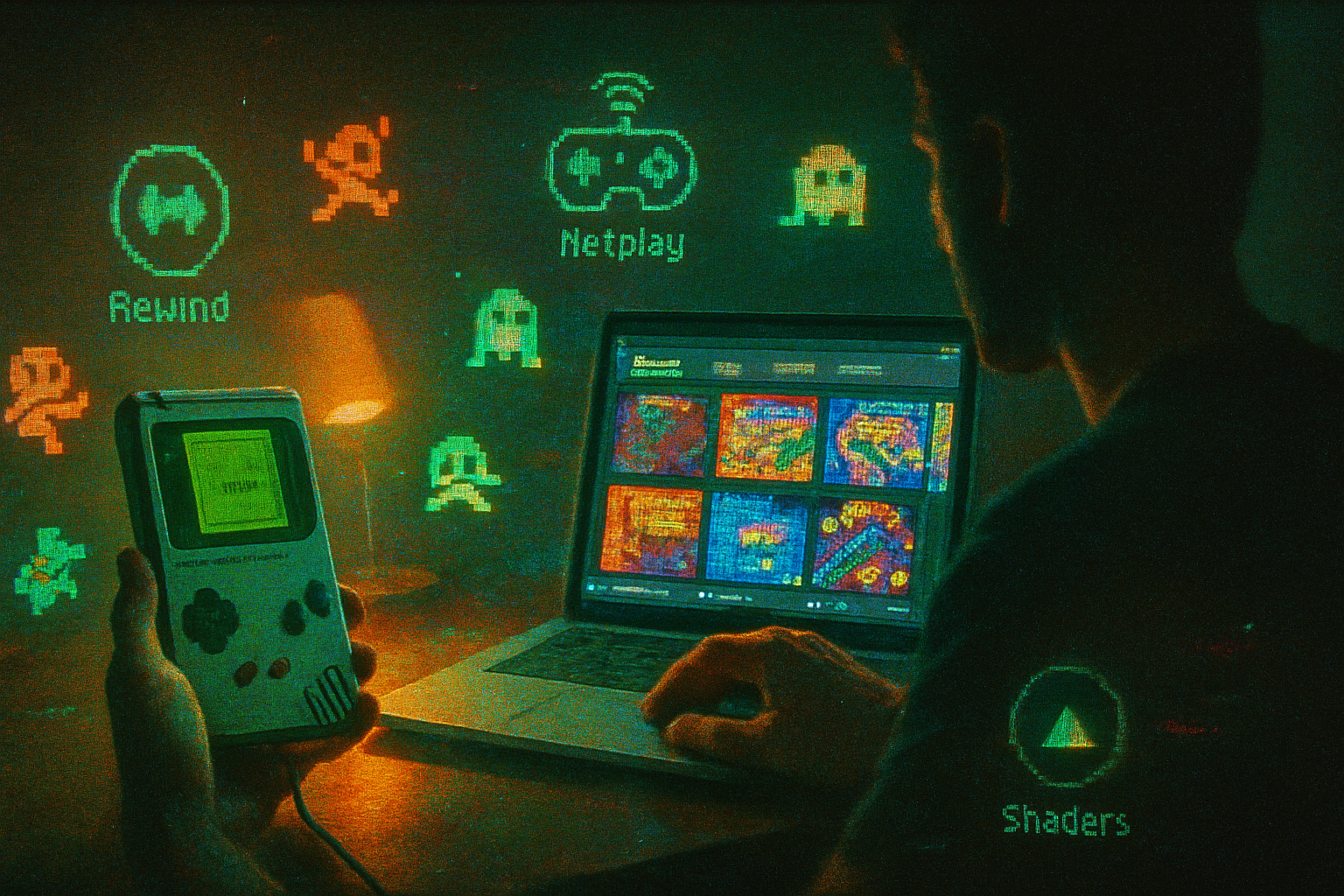· retrogaming · 6 min read
The Rise of Neo Geo Pocket Color Emulators: A Nostalgic Journey with Modern Enhancements
How Neo Geo Pocket Color emulators have grown from simple ports into polished, feature-rich players that let fans relive - and refine - classic handheld experiences with save states, enhanced graphics, online play and preservation tools.
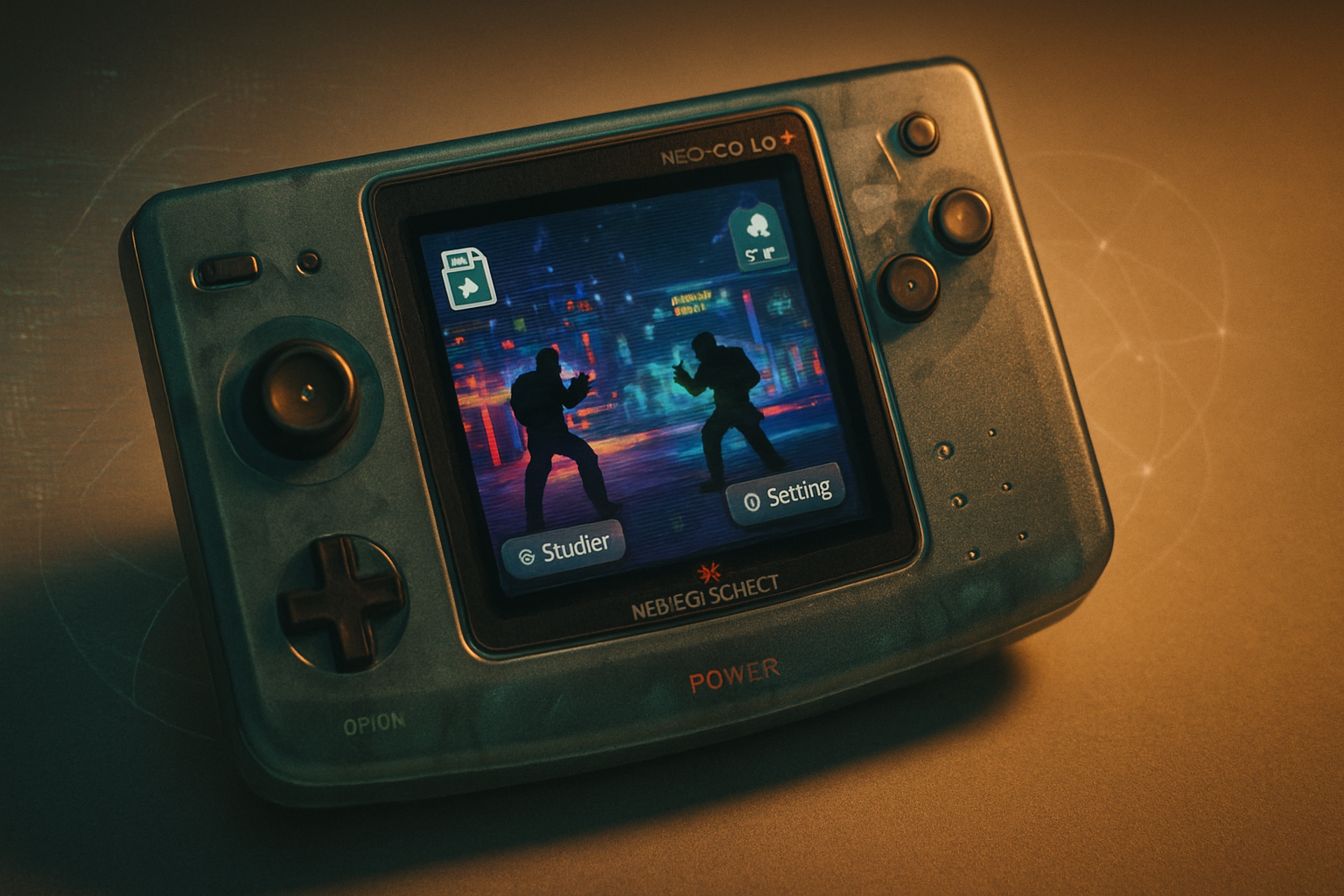
A handheld that refused to fade
The Neo Geo Pocket Color (NGPC) launched by SNK in 1999 has an outsized reputation for tight controls, distinctive pixel art and a library full of character-driven titles like SNK vs. Capcom: The Match of the Millennium, Sonic Pocket Adventure and King of Fighters R-2. Though the system was short-lived, its fans have remained loyal - and emulation has become the bridge between nostalgia and modern play.
For background on the system and its library, see the Neo Geo Pocket Color entry on Wikipedia: https://en.wikipedia.org/wiki/Neo_Geo_Pocket_Color.
Why emulation matters for NGPC
Physical cartridges are finite, hardware ages and original devices can be scarce. Emulation preserves playable copies of these games and makes them accessible to a broader audience. Beyond preservation, emulators offer modern conveniences and enhancements that transform the experience without changing the underlying game code.
Modern multi-system frontends and emulator projects such as RetroArch and MAME provide robust support for vintage platforms and their associated features (https://www.retroarch.com/, https://www.mamedev.org/). Specialized emulators and cores for NGPC - and projects that prioritize accuracy like Mednafen - have further improved compatibility and fidelity (https://mednafen.github.io/).
What modern NGPC emulators add to the original experience
Emulators started as basic software reproductions of hardware behavior. Today’s projects add layers of functionality that enhance comfort, visual fidelity and social connectivity without requiring modded cartridges or original hardware. Key enhancements include:
Save states and rewind
- Save states let you freeze and resume any point-even mid-frame-and are perfect for saving after a difficult boss or for practicing sequences. Rewind adds a time-travel safety net that lets you correct mistakes in real time.
Improved graphics via shaders and scaling
- CRT shaders, scanline filters, and integer- or hi-res scaling let players choose between authentic blur or crisp pixels. Modern upscalers can produce clean, HD-friendly output while shaders recreate the warmth and curvature of old displays.
Enhanced audio
- Higher sample rates, denoising and audio interpolation improve clarity. Some emulators let you route audio through advanced DSP plugins for a fuller sound without altering the original mix.
Input flexibility and low-latency options
- Remap controls, use modern controllers, or reduce input latency via frame delay compensation and direct input paths offered by many cores.
Netplay and online matchmaking
- Projects like RetroArch add netplay capabilities, enabling multiplayer across great distances for titles that supported local link play. This revives the social aspect of handheld link-cable sessions.
Cheating and training tools
- Built-in cheat support, slow-motion, and frame advance are valuable for learning, speedrunning, or experiencing games in different ways.
Quality-of-life UI features
- Beautiful frontends, metadata scraping, box art, and overlays make building a curated NGPC collection simple and attractive.
Accuracy vs. enhancement: the debate among fans
The growth of emulator features has stirred an ongoing debate:
Purists prioritize cycle-accurate emulation and faithful reproduction of quirks (unusually timed input windows, tiny audio artifacts, or border behavior). For them, projects like Mednafen and MAME - which emphasize accuracy - are preferred.
Modernizers favor quality-of-life improvements - save states, graphical filters, and netplay that make titles more approachable. They argue that subtle presentation tweaks can be reversible and that the core gameplay remains unchanged.
A sensible middle ground is configurable emulation: allow users to toggle accuracy modes and enhancements so they can choose whether to experience a game in strict original form or with modern conveniences.
Real-world examples: how enhancements change play
Speedrunning - Save states, frame advance and better input timing make precision practice faster. Many runners still perform final runs on hardware for legitimacy, but emulators accelerate practice.
Multiplayer revival - Link-cable-only titles have been resurrected via netplay cores, making local-only experiences available to remote friends.
Accessibility - Rewind and save states lower the barrier to entry for newcomers who might otherwise be discouraged by steep difficulty spikes.
Picking an emulator and configuring it (practical guide)
Choose the right software stack
- RetroArch (https://www.retroarch.com/) is a popular frontend that organizes emulation with interchangeable “cores.” Look for NGPC-compatible cores and community guides.
- Mednafen focuses on accurate emulation and can be used directly or via RetroArch cores (https://mednafen.github.io/).
- MAME provides a high-accuracy alternative with excellent preservation of system quirks (https://www.mamedev.org/).
Recommended settings to try
- Save states - enable a few quick-save slots and map them to convenient buttons.
- Shaders - experiment with CRT shaders for authenticity or integer scale/hq4x for crispness.
- Audio - increase sample rate to 48 kHz or higher for cleaner output and enable interpolation if available.
- Input - use a modern controller and tweak frame delay if you feel input lag; try low-latency USB modes if supported.
Netplay and multiplayer
- Use cores that support netplay (RetroArch has built-in netplay functionality). Expect to configure input latency and rollback settings depending on connection quality.
Legal and preservation considerations
- Emulation itself is legal, but distributing or downloading copyrighted ROMs without permission is generally illegal. Many preservationists encourage creating digitized dumps from cartridges you own. See project and legal documentation before proceeding.
Preservation, legality and ethics
Emulators act as both a means to play and a tool for historical preservation. The ethics are nuanced:
- Archival value - Academic projects and museums rely on emulation to preserve software for future study.
- Legal landscape - Laws vary by country; many jurisdictions permit making archival copies in special cases but not distribution. Commercial re-releases (collections on modern platforms) coexist with emulation and provide legitimate alternatives.
- Responsible use - Supporting official re-releases and buying hardware where possible sustains the original creators and rights holders.
Tips to balance nostalgia with modern improvements
- Keep a baseline - Maintain an “authentic” profile that disables enhancements and an “enhanced” one that enables conveniences. Switch depending on mood.
- Use shaders sparingly - A good shader can evoke nostalgia without washing out the art. Preserve original resolution for pixel-perfect gameplay where timing matters.
- Separate practice and runs - Use save states and rewind for learning, then practice on authentic settings for challenge or competition.
- Document your setup - If you share clips or runs online, state whether they were done on hardware, accurate emulation, or enhanced emulation to keep expectations clear.
Where the future leads
Emulation projects continue to refine accuracy while adding modern features. Improvements in upscaling, low-latency netplay, and preservation tools will keep the NGPC library playable and discoverable for new generations. As emulators evolve, so will the conversation about what it means to faithfully experience a classic game versus adapting it for contemporary play.
Conclusion
Neo Geo Pocket Color emulators have matured from basic compatibility projects into sophisticated platforms that honor the past while embracing modern convenience. Whether you want an unvarnished replay of 1999 or a more forgiving and sharable experience in 2025, today’s emulation ecosystem offers both - and the choice is yours.
References
- Neo Geo Pocket Color - Wikipedia: https://en.wikipedia.org/wiki/Neo_Geo_Pocket_Color
- RetroArch - official site (features, netplay, shaders): https://www.retroarch.com/
- MAME - official site (preservation-focused emulation): https://www.mamedev.org/
- Mednafen - official site (accuracy-oriented emulator): https://mednafen.github.io/
